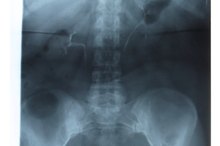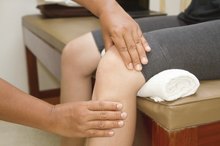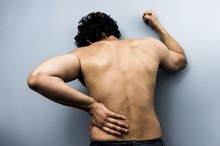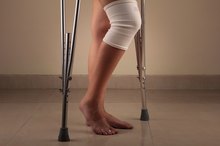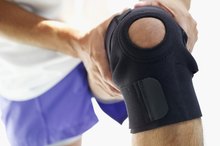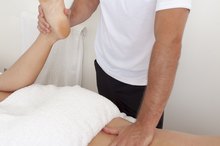Lumbar Laminectomy Rehabilitation Protocol
Recovering from a lumbar laminectomy surgical procedure can be a painful, difficult process for any patient. Following your procedure, your doctor and surgeon will prescribe a physical therapy treatment plan to assist you with the rehabilitation period for your lower back. This treatment plan is geared to meet specific timelines and treatment goals as defined by a lumbar laminectomy treatment protocol. Your assigned physical therapist will follow this protocol to provide you the best results possible for your healing process.
Definition
A lumbar laminectomy is a spinal surgery that involves removing bone from your lower back in order to relieve excessive pressure on your spinal cord. This procedure can be prescribed to relieve lower back pain or radiating pain throughout your legs and lower body. Recovery from this procedure can be lengthy and include months of therapy and other treatments geared towards strengthening your back and regaining full range of motion in your lower spine.
Early Protocol
Can You Do Situps After Hip Replacements?
Learn More
An early protocol for lumbar laminectomy physical therapy typically includes walking therapy as determined by your ability to tolerate it, proper bed positioning for sleep at night, and the introduction of low-impact exercises like pelvic tilt or ankle flexion to begin strengthening your lower extremities. This protocol is begun immediately following the surgical procedure and continued for up to 30 days post-op. Your therapist may also introduce other low-intensity exercises such as leg flexion or leg extensions, depending on your pain level.
Later Months
During the first three months of the rehabilitation process, your therapy will focus more on strengthening your legs and large muscles groups in your abdomen and lower back. Exercises will include wall sits, elliptical training, treadmill walking or jogging, and leg squats. Your therapist will continue to incorporate manual mobilization therapy to help you regain full range of motion within your lower spine through the use of massage techniques to the surrounding muscles. Goals include walking two miles at a steady pace and returning to pain-free activities of daily living.
- During the first three months of the rehabilitation process, your therapy will focus more on strengthening your legs and large muscles groups in your abdomen and lower back.
- Your therapist will continue to incorporate manual mobilization therapy to help you regain full range of motion within your lower spine through the use of massage techniques to the surrounding muscles.
Final Months
Ulnar Osteotomy Rehabilitation Protocols
Learn More
Months three through six will include final therapeutic exercises and mobilizations as your spine and surrounding muscles begin to fully heal. Exercises will be adjusted to match your active lifestyle hobbies or activities, such as sports involvement or helping you restart your exercise routines. Pushups and other upper extremity exercises may also be included at this point to help balance your muscle strength throughout your back. Goals for the end of therapy segment will include a complete return to all presurgical activities.
- Months three through six will include final therapeutic exercises and mobilizations as your spine and surrounding muscles begin to fully heal.
- Pushups and other upper extremity exercises may also be included at this point to help balance your muscle strength throughout your back.
Related Articles
References
- Nordin MC, Balagué F. Exercise may be beneficial for patients with chronic severe sciatica who would normally qualify for surgery. Evid Based Med. 2012;18(2):63-64. doi:10.1136/eb-2012-100805
- Rodeghero JR, Denninger TR, Ross MD. Abdominal pain in physical therapy practice: 3 patient cases. J Orthop Sports Phys Ther. 2013;43(2):44-53. doi:10.2519/jospt.2013.4408
- Shipton EA. Physical Therapy Approaches in the Treatment of Low Back Pain. Pain Ther. 2018;7(2):127-137. doi:10.1007/s40122-018-0105-x
- Sohn MK, Lee SS, Song HT. Effects of acute low back pain on postural control. Ann Rehabil Med. 2013;37(1):17-25. doi:10.5535/arm.2013.37.1.17
- Wong J, Côté P, Sutton D, et al. Clinical practice guidelines for the noninvasive management of low back pain: A systematic review by the Ontario Protocol for Traffic Injury Management (OPTIMa) Collaboration. Eur J Pain. 2016;21(2):201-216. doi:10.1002/ejp.931
- Shin TM, Bordeaux JS. The Role of Massage in Scar Management: A Literature Review. Dermatol Surg. 2012;38(3):414-423. doi:10.1111/j.1524-4725.2011.02201.x
- Foster NE, Anema JR, Cherkin D, et al. Prevention and treatment of low back pain: evidence, challenges, and promising directions. The Lancet. 2018;391(10137):2368-2383. doi:10.1016/s0140-6736(18)30489-6
Writer Bio
Adam Fonseca has been a writer and blogger since 2005. He maintains a number of different blogs on a variety of subjects ranging from health care to golf. Fonseca has a Master of Health Administration degree from the University of Phoenix and degrees in health science and psychology from Bradley University.
